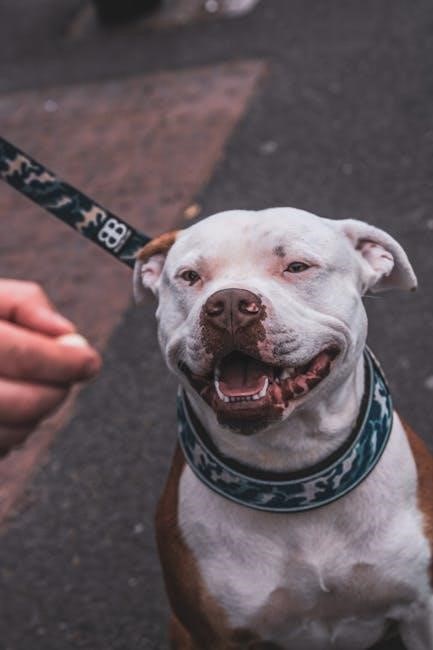Puppy potty training is a crucial step in raising a well-behaved dog, especially for busy pet owners. The Puppyfieds.com guide provides a comprehensive approach to mastering this process, ensuring your puppy learns quickly and efficiently. With tips on understanding bladder control, using pee pads, and creating schedules, this guide makes potty training manageable even for those with tight schedules. It’s designed to help you navigate challenges and achieve long-term success.
Why Potty Training is Essential for Busy Pet Owners
Potty training is vital for busy pet owners to maintain a clean, stress-free home environment while ensuring their puppy’s health and well-being. A well-trained puppy reduces the risk of accidents, saves time on constant cleanups, and prevents costly damage to belongings. By establishing a routine and using tools like pee pads, busy owners can manage their schedules effectively. This foundation also strengthens the bond between owner and puppy, fostering trust and discipline. The Puppyfieds.com guide offers practical strategies tailored to hectic lifestyles, making potty training achievable and efficient; Early training sets the stage for long-term success.
Overview of the Puppyfieds.com Guide
The Puppyfieds.com guide offers a comprehensive, easy-to-follow approach to potty training tailored for busy pet owners. It provides practical advice on understanding puppy behavior, creating effective schedules, and choosing the right training methods. The guide emphasizes consistency, positive reinforcement, and leveraging essential supplies like pee pads and crates. By addressing common challenges and offering solutions, it helps reduce stress and mess, ensuring a smooth journey to mastering potty training. This resource is designed to fit seamlessly into hectic lifestyles while fostering long-term success.

Understanding Puppy Behavior and Biology
Puppies can hold their bladder for hours equal to their age in months, up to nine months. Their natural instincts drive them to eliminate in specific areas, aiding training strategies.
Factors Influencing a Puppy’s Ability to Hold Their Bladder
A puppy’s ability to hold their bladder is influenced by age, size, breed, and training consistency. Generally, puppies can control their bladders for hours equal to their age in months, up to about nine months. Smaller breeds tend to have shorter retention periods, while larger breeds may have better control. Proper training and routine also play a significant role in improving bladder capacity. Understanding these factors helps tailor a potty training plan that suits your puppy’s needs and ensures fewer accidents.
Signs Your Puppy Needs to Go
Recognizing when your puppy needs to go is key to successful potty training. Common signs include sniffing, circling, squatting, or whining. Puppies may exhibit restlessness or pace near doors. Younger puppies (under 6 months) have limited bladder control, so they may suddenly stop playing and show urgency. Puppyfieds.com emphasizes that these behaviors are natural and consistent, allowing owners to act quickly to prevent accidents. Paying attention to these cues helps establish a routine and speeds up the training process.
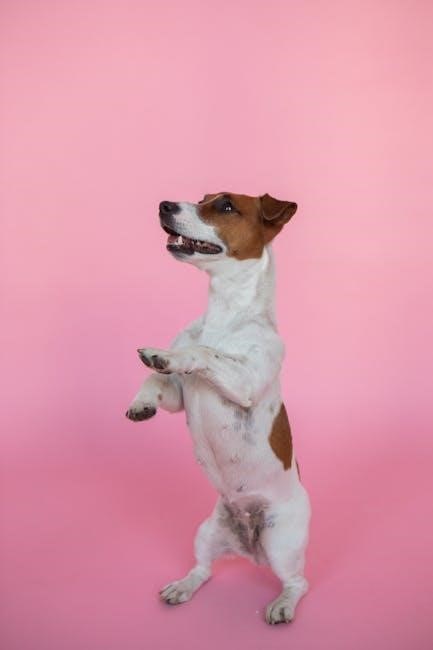
Establishing a Potty Training Routine
A consistent routine is key to successful potty training. Schedule feeding times and potty breaks to align with your puppy’s natural habits and your availability; This predictable pattern helps your puppy learn when it’s time to go, reducing accidents and stress for busy owners.
Creating a Schedule for Feeding and Potty Breaks
A consistent feeding and potty schedule is key to successful training. Start by feeding your puppy at set times, then immediately take them outside or to the designated potty area. Puppies typically need to go after meals, naps, and playtime. For younger puppies, plan breaks every 1-2 hours, increasing the interval as they grow. Aligning feeding times with potty breaks helps create a routine, making it easier for your puppy to learn and for you to manage, even with a busy schedule.
The Importance of Consistency in Training
Consistency is key to successful puppy potty training, especially for busy pet owners. Establishing a predictable routine helps puppies understand expectations and reduces confusion. Irregular schedules can lead to accidents, as puppies thrive on clear patterns. By sticking to a consistent feeding and potty break schedule, you create a reliable learning environment. This approach also helps busy owners manage their time effectively, ensuring their puppy learns quickly and avoids setbacks. Consistency builds trust and accelerates the training process, making it easier to achieve long-term success.

Choosing the Right Training Method
Decide between indoor or outdoor potty training based on your lifestyle and puppy’s needs. Indoor methods like pee pads offer convenience, while outdoor training often leads to faster learning. Combining both can provide flexibility for busy schedules.
Outdoor vs. Indoor Potty Training
Deciding between outdoor and indoor potty training depends on your lifestyle and puppy’s needs. Outdoor training is ideal for dogs with consistent access to a yard, promoting natural instincts. Indoor training, using pee pads or litter boxes, suits busy owners with limited outdoor space or time. Each method has pros and cons, but combining both can offer flexibility. The Puppyfieds.com guide provides strategies to tailor your approach, ensuring your puppy thrives regardless of the method chosen.
Combining Both Methods for Busy Schedules
For busy pet owners, combining outdoor and indoor potty training offers flexibility and efficiency. Use pee pads or a designated indoor area for quick breaks when outdoor trips aren’t possible. This hybrid approach ensures your puppy learns to go in both environments, reducing accidents. Puppyfieds.com recommends using a crate to help with bladder control and consistency. By alternating methods, you can adapt to your schedule while maintaining progress. This balanced strategy is ideal for owners with limited time, ensuring your puppy stays on track regardless of life’s demands.

Essential Supplies for Potty Training
The right supplies are key to successful potty training. Pee pads, crates, and cleaning products are must-haves; These tools help busy owners manage accidents and maintain hygiene effectively.
- Pee pads for indoor training.
- Crates to prevent accidents when unsupervised.
- Cleaning products to eliminate odors.
Visit Puppyfieds.com for a detailed guide on mastering puppy potty training with these essential supplies.
Best Pee Pads for Indoor Training
Choosing the right pee pads is essential for indoor potty training. Look for pads with leak-proof layers and odor control to keep your home clean. Eco-friendly options are gaining popularity, while scented pads can attract puppies. Place them in a quiet, accessible area to encourage consistent use. The Puppyfieds.com guide recommends rotating pad locations to prevent accidents elsewhere. For busy owners, high-quality pads minimize cleanup and make training efficient, ensuring your puppy learns quickly and effectively.
Using a Crate to Aid in Potty Training
A crate is a valuable tool for potty training, helping puppies learn bladder control and reducing accidents. According to the Puppyfieds.com guide, a crate mimics a den, encouraging puppies to avoid soiling their space. Start with short periods and gradually increase time as your puppy matures. The crate also provides a safe area for your puppy when unsupervised, preventing mishaps. By consistently using a crate, you can accelerate the training process and help your puppy understand the concept of holding their bladder until it’s time to go outside or use a designated area.
Cleaning Products for Accidents
Cleaning products are essential for effectively managing accidents during puppy potty training. Enzymatic cleaners are highly recommended as they break down protein-based stains and odors, preventing your puppy from being attracted to the same spot again. Vinegar solutions can also be used as a natural alternative to neutralize bacteria and eliminate smells. Additionally, disinfectants are crucial for ensuring the area is safe and free from germs. These products can be easily found online or in pet stores, making them a convenient solution for busy pet owners. Proper cleaning not only maintains hygiene but also supports the puppy’s learning process by removing any lingering scents that might cause repeated accidents, ensuring a cleaner and healthier environment.
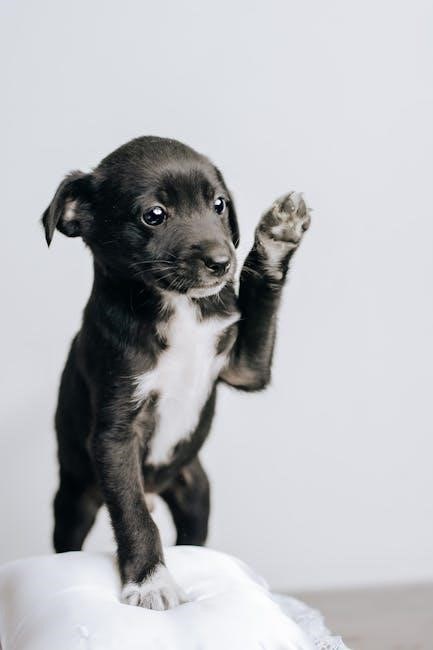
Managing Accidents and Setbacks
Accidents are inevitable, but they don’t have to derail progress. Immediate cleanup with neutral cleaners prevents repeated soiling. Observe your puppy’s signals and adjust routines accordingly. For busy owners, minimizing distractions during potty breaks and supervising closely can reduce setbacks. Puppyfieds.com offers practical tips to address common challenges effectively.
How to Prevent Accidents Indoors
Preventing indoor accidents requires consistent supervision and quick action. Watch for signs like sniffing or circling, and immediately guide your puppy to the designated potty area. Use puppy gates to limit access to areas where accidents often occur. Clean up any messes thoroughly with odor-neutralizing cleaners to avoid attracting your puppy to the same spot again. Stick to your feeding and potty schedule to reduce the chance of unexpected accidents. Busy owners can also use pee pads in strategic locations for emergencies. These strategies, outlined in the Puppyfieds.com guide, help maintain a clean and stress-free home.
Cleaning Up Accidents Properly
When accidents happen, it’s crucial to clean thoroughly to prevent your puppy from revisiting the same spot. Use a pet-safe cleaner to remove all traces of urine or feces. Avoid ammonia-based products, as they can attract your puppy to the area again. Neutralize odors with white vinegar or enzymatic cleaners specifically designed for pet accidents. Always rinse the area with clean water and dry it completely. Proper cleaning helps discourage repeat accidents and supports successful potty training. Consistency in cleanup is key to maintaining progress.
Positive Reinforcement Techniques
Positive reinforcement is key to successful potty training. Use praise and rewards to encourage good behavior. Timing and consistency are crucial for effective learning. For more tips, visit Puppyfieds.com.
Using Praise and Rewards Effectively
Positive reinforcement is key to successful potty training. When your puppy goes potty in the right place, immediately reward them with treats, toys, or verbal praise like “Good job!” Consistency is crucial, as puppies thrive on clear, timely feedback. Rewarding your puppy right after they eliminate ensures they associate the action with the praise. For busy owners, small, quick rewards fit seamlessly into hectic schedules, keeping training efficient and stress-free. This approach accelerates learning and strengthens your bond with your puppy.
Timing and Consistency in Rewarding
Timing and consistency are key to effective rewarding in puppy potty training. Reward your puppy immediately after they eliminate in the correct spot, using treats, praise, or affection. Delayed rewards can confuse them about what behavior is being reinforced. Consistency ensures your puppy understands the connection between the action and the reward. Use a specific command like “go potty” to help them associate the action. Over time, phase out treats as they learn, but always celebrate successes to maintain motivation. Puppyfieds.com emphasizes these strategies for busy owners to achieve quick results.

Supervision and Monitoring
Constantly watch your puppy for signs it needs to go, like sniffing or circling. Use cameras or apps to monitor when you’re not home, ensuring timely interventions and preventing accidents.
Watching for Signs Your Puppy Needs to Go
Puppies often exhibit specific behaviors when they need to go potty. These signs include circling, sniffing, squatting, or whining. Recognizing these cues early is crucial for preventing accidents. If you notice your puppy showing these signals, act quickly by guiding them to the designated potty area. Consistency in observing and responding to these behaviors is key to successful training. Missing these signs can lead to setbacks, so staying vigilant, especially in the early stages, is essential. The Puppyfieds.com guide offers detailed insights into these behaviors and how to respond effectively, helping busy owners master potty training seamlessly.
Using Technology to Monitor Your Puppy
Technology can be a game-changer in monitoring your puppy’s potty training progress. Smart collars and wearable devices track activity levels, while cameras allow remote observation. Apps send reminders for potty breaks, ensuring consistency. Motion-activated cameras alert you to potential accidents, helping you intervene quickly. These tools are especially useful for busy owners, providing peace of mind and helping you stay connected to your puppy’s needs. By integrating technology, you can enhance supervision and ensure your puppy stays on track with their training, even when you’re not physically present.
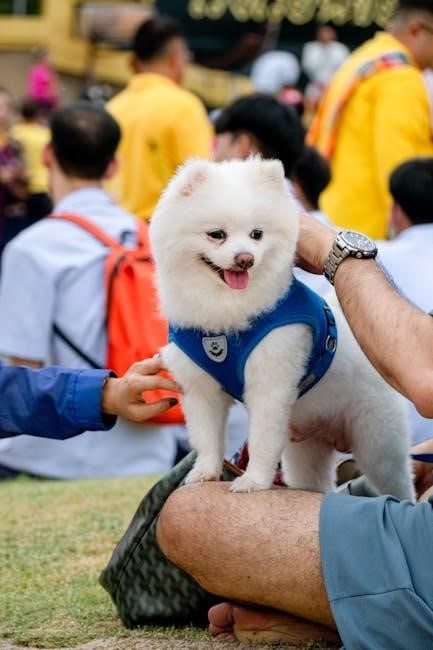
Handling Setbacks and Challenges
Setbacks are natural in potty training; staying patient is key. Troubleshoot common issues like accidents or resistance by adjusting routines and rewards. Consistency helps overcome challenges and ensures progress.
Troubleshooting Common Potty Training Issues
Identifying and addressing setbacks is key to successful potty training. If your puppy consistently has accidents, check for inconsistencies in your schedule or missed signals. Ensure you’re taking them out frequently enough, especially after meals or playtime. Avoid punishing mistakes, as this can create anxiety. Instead, clean accidents thoroughly with odor-neutralizing products to prevent repeat behavior. If crate training isn’t working, adjust the size or supervision. Stay calm and patient—every puppy learns at their own pace. The Puppyfieds.com guide offers tailored solutions for these challenges.
Staying Patient and Persistent
Mastering puppy potty training requires unwavering patience and persistence, especially for busy pet owners. Accidents will happen, but consistent effort ensures progress. Reward small successes, like correctly using pee pads or outdoor areas, to reinforce good habits. Busy schedules demand creativity, such as short, frequent breaks during downtime. Over time, persistence pays off, turning challenges into long-term success. Stay calm, celebrate milestones, and remember, every effort brings you closer to a fully trained puppy.
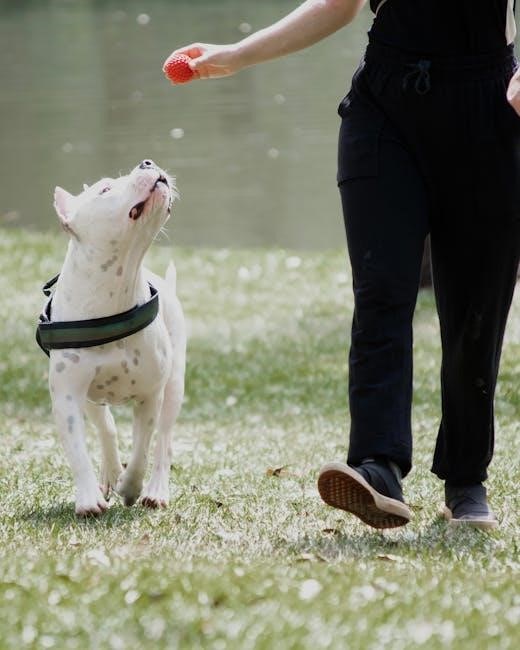
Time Management for Busy Owners
Busy schedules don’t have to hinder potty training. Quick, efficient potty breaks and leveraging downtime can help you stay consistent. The Puppyfieds.com guide offers practical tips to fit training into even the tightest routines, ensuring success without sacrificing time.
Quick and Efficient Potty Breaks
- For busy pet owners, quick potty breaks are essential to maintain consistency without spending too much time.
- Take your puppy outside immediately after meals, naps, and playtime to maximize efficiency.
- Use a specific command like “go potty” to help your puppy associate the action with the command.
- Keep the leash tight during breaks to minimize distractions and focus on the task;
- Reward your puppy immediately after they go to reinforce good behavior.
- For indoor training, use high-quality pee pads placed in strategic areas for quick access.
Leveraging Downtime for Training
Busy schedules don’t have to hinder puppy potty training. Short moments, like commercial breaks during TV time or while waiting for coffee, can be used for quick potty breaks or reinforcement. Even five minutes of focused training can make a difference. Use downtime to practice verbal cues or reward good behavior. This approach keeps training consistent without overwhelming your routine. It also helps strengthen the bond between you and your puppy, making the process more enjoyable and effective. Consistency during downtime ensures progress, reinforcing your commitment to successful potty training.
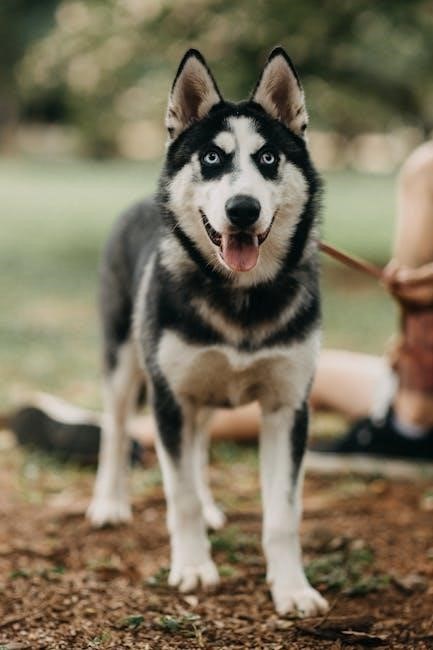
Advanced Training Tips
Transition to outdoor-only training by gradually reducing indoor potty areas. Increase freedom in the house as your puppy proves reliable. The Puppyfieds guide helps busy owners maintain long-term success with these advanced techniques.
Transitioning to Outdoor-Only Training
Transitioning your puppy to outdoor-only training is a milestone in potty training. Start by gradually reducing reliance on indoor pads, encouraging your puppy to go outside first. Choose consistent spots and use specific commands like “go potty” to create a routine. Reward successful outdoor trips with praise and treats. Over time, phase out indoor options, ensuring your puppy associates the outdoors as the primary bathroom area. This step requires patience and consistency, especially for busy schedules, but it leads to long-term success and a cleaner home.
Gradually Increasing Freedom in the House
As your puppy becomes more reliable with potty training, you can slowly grant them more freedom indoors. Start by allowing access to one room at a time, always under supervision. Use baby gates to restrict areas until you’re confident in their ability to hold their bladder. Reward good behavior and avoid punishment for accidents, as this could set back progress. The Puppyfieds.com guide suggests introducing freedom in small steps to build trust and independence. This approach ensures your puppy feels safe and learns responsibility gradually.
Mastering puppy potty training is achievable with patience, consistency, and the right strategies. The Puppyfieds.com guide equips busy owners with practical tools for long-term success, ensuring a happy, well-trained puppy.
Final Tips for Mastering Puppy Potty Training
Consistency and patience are key to long-term success. Always reward good behavior and stay calm during accidents. Gradually increase your puppy’s freedom as they grow more reliable. For busy owners, quick potty breaks and leveraging downtime can reinforce training. Celebrate small milestones to keep motivation high. Remember, every puppy learns at their own pace, so stay patient and persistent. With time and effort, your puppy will master potty training, creating a stronger bond and a happier home. Visit Puppyfieds.com for more expert advice.
Maintaining Long-Term Success
Long-term success in puppy potty training requires consistent effort and adaptability. As your puppy grows, their bladder control improves, but occasional accidents may still occur. Regularly reinforce good habits, such as immediate praise for correct behavior, and remain vigilant for signs they need to go. Busy owners can maintain success by sticking to routines and adjusting schedules as needed. Puppyfieds.com emphasizes the importance of patience and proactive adjustments to ensure your puppy remains reliable over time. This approach helps build a strong foundation for lifelong potty training success.
